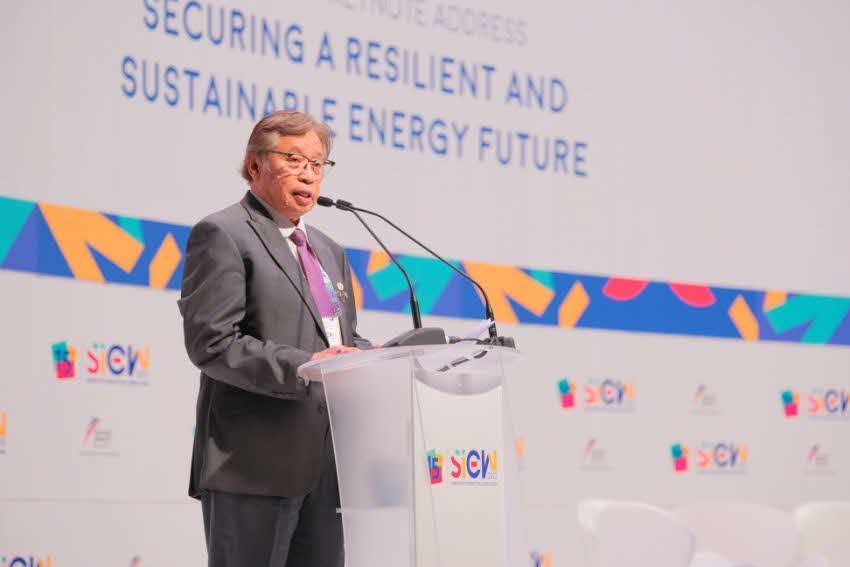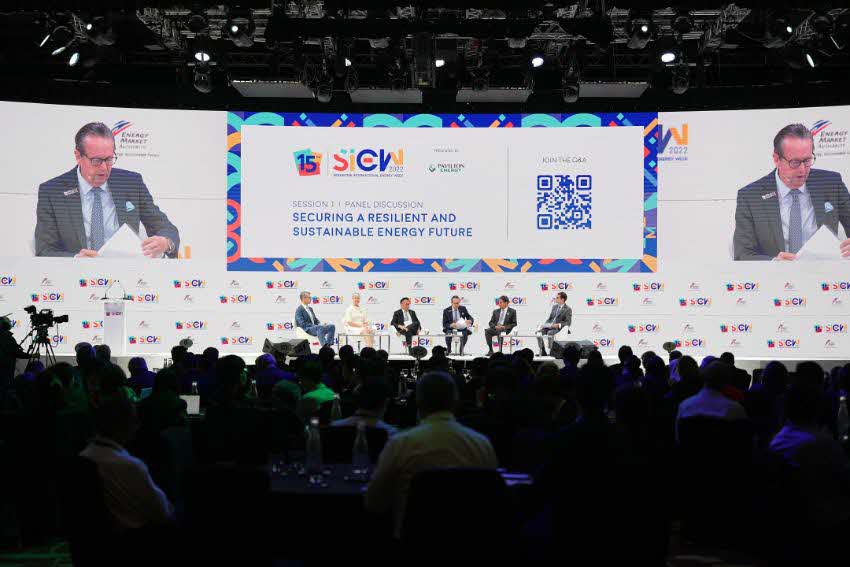The energy transition agenda is getting traction from multi-stakeholders, but greater regional cooperation is required to collectively meet our current and future energy demands. Abhishek Dubey, Associate Director, KPMG Services Pte Ltd Singapore, reports. This article is contributed by KPMG - the official Content Partner for SIEW 2022.

The energy transition is not a new phenomenon for the energy industry. Fifty-plus years of sustained economic growth is powered by available, reliable, and affordable energy. However, panel members at the Singapore Energy Summit (SES) Session 1 – Securing a Resilient and Sustainable Energy Future agreed that much more must be done to embrace energy transition at speed and scale. Disruption is needed to achieve emissions targets and climate goals if we are to meet growing energy demands in the region.
Sarawak Premier Datuk Patinggi Tan Sri (Dr) Abang Haji Abdul Rahman Zohari Bin Tun Datuk Abang Haji Openg, launched the SES Session 1 panel discussion on 25 October. In his Keynote, he highlighted that Sarawak has emerged as a regional hub by leveraging its hydropower plants to support a green economy.
The Premier, who is also Minister for Finance and New Economy, Minister for Natural Resources and Urban Development, and Minister for Energy and Environmental Sustainability, shared Sarawak’s 2030 ambition to emerge as a renewable energy leader in the region. It aims to do this with the following:
- Maintain at least 60% renewable energy capacity mix by 2030;
- 600,000 tonnes annual CO2 emission reduction via electrification of the mobility fleet; and
- Achieve more than 15% of annual income from foreign markets outside of Sarawak.

More resources available, but more also needs to be done
During the panel discussion Francesco La Camera, Director-General, International Renewable Energy Agency (IRENA), shared that the world is heading towards a new energy system.
The energy transition agenda globally is dominated by renewables and complemented by hydrogen. The ASEAN region is a significant demand driver of energy, and the energy transition process is unstoppable now.
To drive the energy transition agenda, ASEAN needs approximately US$20 billion per year. Hence, a new paradigm of collaboration and cooperation is required between developed and developing economies to drive the green agenda. Mr La Camera emphasised that disruption is needed to meet climate goals in the face of growing energy demand.
David Griffin, Founder and Chief Executive Officer of Sun Cable, highlighted that the scale of what is coming in terms of the energy transition is totally unprecedented. He shared that the way the industry responded to the demand during World War II was unprecedented but is small compared with the challenges we face today.
Governments need to ensure that electricity is coming from zero emissions sources, but also have to deliver to where there is energy demand. He emphasised that governments in the region need to comprehend the scale and speed of the change in the future.
Governments must plan and address the policy implications to support these novel energy projects. Government policy interventions are critical to support energy projects, for example land to set up new energy infrastructure.
Mr Griffin shared that the Australia-Asia Pacific Network of Science & Technology Centres (ASPAC) renewable energy project is one such example of a renewable energy project to support regional energy demand. The one-of-a-kind intercontinental energy transmission project includes 18 GW of energy generation capacity, 41 GW capacity of energy storage, and more than 5,000 km of transmission lines.
Sharing his insights as well, Julien Pouget, President, Asia Pacific, Exploration & Production and Renewables, TotalEnergies, noted that globally, countries are facing challenges on two fronts, that is energy transition and energy security and resilience.
Mr Pouget admitted that things are moving, but a lot still needs to be done as 80% of the global energy mix still comes from non-renewable sources. As a company, TotalEnergies is focusing on two broad areas, namely gas and renewable energy capacity to address the energy transition and security challenges.
Alan Heng, Group CEO of Pavilion Energy, gave an interesting perspective on the importance of gas. He elaborated that for the last 50-plus years, sustained economic growth has been powered by available, reliable, and affordable energy. In that time, the energy industry has transitioned from coal to gas. He added that this is part of an ongoing transition. Hence, it is not a new phenomenon for the energy industry.
He also said gas plays a critical role in the energy transition as it is the cleanest form of energy among all other available non-renewable energy sources. He said natural gas infrastructure is already in place and has the ability to generate the cleanest form of energy from fossil fuels. More importantly, he said natural gas provides fast power necessary to deal with the intermittency challenges of renewables or the conventional supply glitches or disruptions linked with the import of energy.
Mr Heng highlighted that natural gas can also help us move towards developing a hydrogen economy which will require infrastructure and technology to generate, store and transport. He shared that the actual challenge is to create demand for hydrogen across the energy industry. Natural gas could be leveraged to drive forward the hydrogen agenda and generate industry demand gradually.
Net zero is one part of the energy transition. As Dr Angela Wilkinson, Secretary General and Chief Executive Officer, World Energy Council, said, we need to engage local communities and make them a part of the energy transition as well. This is critical to build trust and willingness. She proposed Transparency, Trustworthiness and Transformation for a clean and just energy transition.
In summary
In summing up, the key takeaways from the panellists were that:
- Governments need to consider the long-term impact of policies to support the region's energy transition.
- The capital and technologies are available, but willingness and social trust have yet to be developed.
- There is an enormous amount of support available for the energy transition. However, the energy supply chain is a major concern. Hence, localisation through regional manufacturing is the key.
- Greater governance and stakeholder engagement are highly relevant to the energy transition. Collaborations will be vital to engaging all stakeholders, from governments to industries, to financial institutions.
Follow us on Twitter (@SIEW_sg) to get the latest #SIEW2022 updates throughout the day!